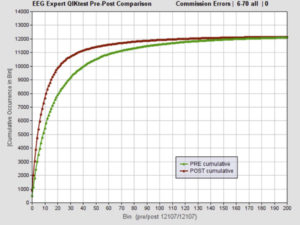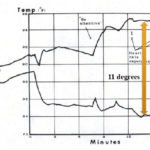by Siegfried Othmer | December 29th, 2017
Resolution of Attention Deficit, Impulsivity, and Anxiety in a 22-year-old male, using Infra-Low Frequency Neurofeedback By Priscilla Young
August 1, 2017
A mother brought her 22-year-old son M_ to me for neurofeedback, on the recommendation of a friend whose son I had also worked with. She reported that M_ had been identified as having ADD since elementary school, when he had taken medication for it. He had not been happy while on the medication, and did not eat well when taking it. In high school, he stopped taking it entirely. He had panic attacks in high school that responded positively to hypnotherapy. He had a concussion in the spring of his junior year. The panic attacks occurred during wrestling and predated the concussion. Fear-based anxiety was identified as a concern.
Read More »
Posted in Neurofeedback | No Comments »
by Siegfried Othmer | December 28th, 2017
Neurofeedback has now existed for more than half a century, and it is flourishing in the clinical arena. Many academic researchers, meanwhile, are still stuck at first base worrying about the placebo as a complete explanation of neurofeedback efficacy–the proposition that neurofeedback is nothing but an expensive placebo. Looking at this collectively, it appears that the the placebo hypothesis is drawing much more interest among some academics than what is actually happening in the clinical realm. To those of us inhabiting the real world of clinical practice, this is such a ludicrous spectacle that it is difficult to take seriously. Researchers tend to orient to the published literature and thus listen only to each other. That misses most of the ferment, vitality, originality, and diversity of the field, which happens to reside almost exclusively in the world at large rather than in the formal environs of the research laboratory. Much of the resulting novelty and diversity has not found its way into the journals for the simple reason that clinicians by and large don’t publish their work. They network with other clinicians at conferences and through the Internet.
Read More »
Posted in Neurofeedback, Placebo | No Comments »
by Siegfried Othmer | December 27th, 2017

It is quite remarkable that after a fifty-year history in research and practice the question is still open in some minds as to whether the effects of the neurofeedback exercise might be attributable to the placebo, that nebulous entity that mediates somehow between mind and body. It is even more remarkable that this is occurring in the New World, which long ago found pragmatism to be a more useful way forward than proceeding on the basis of abstract principle. We do neurofeedback because it works–consistently.
Read More »
Posted in Neurofeedback | No Comments »
by Siegfried Othmer | November 21st, 2017

First they denied neurofeedback because they did not believe in brain plasticity.
But they were wrong.
Then they denied neurofeedback for seizures, as they are neurochemically mediated.
But they were wrong.
Then they denied neurofeedback for ADHD because that’s what stimulants are for.
But they were wrong.
Then they denied neurofeedback for migraines because it is a vascular condition.
But they were wrong.
Read More »
Posted in Neurofeedback | No Comments »
by Siegfried Othmer | November 9th, 2017

The subtitle of Thibault and Raz’s latest diatribe against EEG neurofeedback sounds vaguely promising: “Clinical Intervention even if Placebo.” But the ambivalence implicit in the title runs through the entire article. The tone of the paper is argumentative throughout, shoring up an essential posture of skepticism with respect to EEG-NF while also allowing for the possibility that we may have been right all along: there is something to neurofeedback after all. We appear to be witnessing the last stages of resistance by these neurofeedback deniers. A subtle repositioning is going on.
Read More »
Posted in Books and Literature, Neurofeedback | 1 Comment »
by Siegfried Othmer | October 2nd, 2017

Over the years, we have gone to great lengths to argue that neurofeedback is merely biofeedback by other means, and if anything, ILF (Infra-Low Frequency) neurofeedback is even more analogous to traditional biofeedback than standard EEG training. It works with slowly varying physiological signals, and is oriented toward the most basic regulatory functions, including autonomic regulation and arousal regulation. ILF training has clinical priorities in common with somatic biofeedback. The EEG plays only a secondary role in the actual training, and none in the ILF component. Further, the slowly varying signal also involves significant non-neuronal components. A further commonality is that it does not involve operant conditioning.
Read More »
Posted in Biofeedback, Neurofeedback | 2 Comments »









